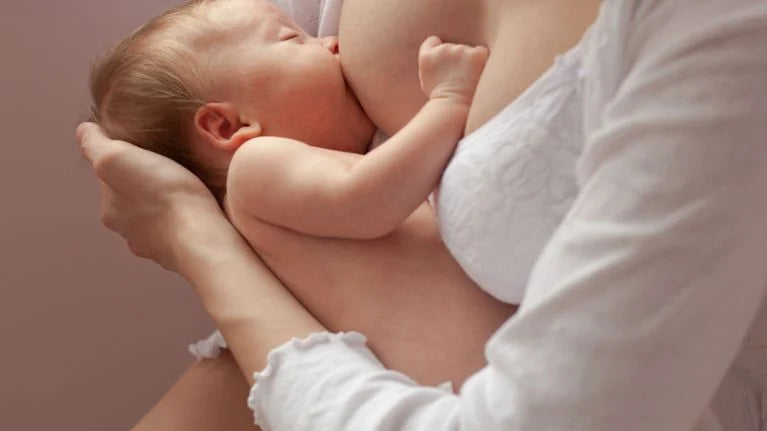Home
Pregnancy & Breastfeeding Tips for New Moms: Preconception, Pumping & Parenting Support
No Milk Coming Out of One Breast? Reasons and Solutions for Uneven Low Milk Supply

No Milk Coming Out of One Breast? Reasons and Solutions for Uneven Low Milk Supply
When you’re breastfeeding your baby, you might notice that it’s not always as cut and dry or as simple as you thought when you first got started. It isn’t a difficult thing to do, but you can still run into challenges you weren’t prepared for in the beginning. For instance, you might wonder at some point, why does one boob make more milk than the other? This is actually not that uncommon for women who are breastfeeding and the solutions are far from difficult.
Some Breastfeeding Basics
One of the first things that you learn when you breastfeed an infant is to feed from both breasts every meal; however, you’ll need to switch the breast you start with each time. In other words, if you start with the right breast in one feeding, you’ll need to start with the left breast the next time. The reason for this is simple. The baby will always take more milk from the first breast and less with the second. If you start with the same breast every time, the breasts will be lopsided.
Problems such as one breast not producing milk or producing less milk than the other breast could be the result of starting with the same breast every time the baby eats because eventually, that second breast will be producing less milk. Let’s take a look at some of the other reasons why one breast may be producing less milk than the other one.
1. Your Baby May Prefer One Breast Over the Other
Sometimes babies simply prefer one breast over another, causing the second breast to sort of be ignored. Breastfeeding works on a system of supply and demand, so the less often babies eat from a certain breast, the less milk that breast tends to make. Oftentimes, this is a temporary situation, but while it’s happening, try pumping from the “neglected” breast so it can make more milk.
2. Your Milk Ducts May Be Uneven in Size
Women sometimes have bigger ducts in one breast than they do in another or one of your nipples might be easier for the baby to latch onto than the other. Basic anatomy, in other words, can vary from one woman to another and there isn’t much you can do about this. Fortunately, this doesn’t affect your ability to produce enough milk to feed your baby.
3. You May Have Some Type of Injury to the Breast
If you’ve ever pierced one or both of your nipples or if you’ve experienced any type of trauma or injury to the breast area, this may result in an uneven milk supply. Even some surgeries can affect your milk supply, so if you believe that this is your problem, you should talk to your doctor or a lactation specialist to determine what you can do about it.
The Bottom Line
In most cases, if you experience an uneven milk supply, it’s easy to pump or hand-express the affected breast so that it starts producing as much milk as the other one. It isn’t that uncommon for one breast to have slightly more milk than the other, especially in between feedings, but if one is far fuller than the other, pumping or hand-expressing is usually the best thing to do.
This brings us to another challenge: what to do when you experience a breast that feels full but no milk when pumping that breast. If you’re pumping and there’s little to no milk coming out, this can be frustrating. If you start to wonder, should I keep pumping if no milk is coming out, the answer is “yes” you should, because you have to give your body enough time for it to work.
That being said, it’s best if you only pump for about 15 minutes and no longer. This gives you enough time for the milk to be expressed without it irritating the breast or making it uncomfortable. Another problem might be your letdown reflex. With new moms in particular, this reflex isn’t as developed as it is in more experienced moms, but the more you breastfeed, the easier it will be for you.
Here are some things that you can do if your letdown reflex is disappointing you:
- Make sure that you’re eating healthy and drinking lots of fluids
- Use a high-quality, preferably electric, pump
- Ask your doctor if you have a hormone imbalance
- Relax and eliminate stress when you can
You might also have a breast infection, which occasionally happens. If you are experiencing a fever, chills, tenderness or pain in either breast, or a discharge that either smells bad or is bloody, you need to see your doctor. Breast infections can usually be cleared up with an antibiotic, but your doctor will have to provide you with a prescription for that.
And if you’re asking yourself, how soon does milk replenish after pumping or feeding the baby, it’s usually only 20 to 30 minutes, which isn’t long! So if you pump for 15 minutes and nothing happens, you can usually wait another 20 to 30 minutes and try doing it again.
Conclusion
An uneven milk supply is not that uncommon when you’re breastfeeding, but the good news is that more often than not, the problem is minor and the solution is easy. Try pumping the affected breast a little more often so the breasts are more even and similar. If you notice anything unusual or you’ve tried everything and nothing works, it’s time to schedule a visit with your doctor.Share


